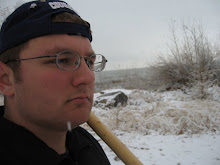
Behind me is Paternoster Square, which means Our Father in Latin and is another name for the Lord's Prayer. My guess is that's where the square got its name.

And the square has a nice sundial that clearly showed that I was there at the end of May.

St. Paul's Cathedral is a very impressive building, and it's a shame I couldn't take pictures inside.

A closer look at the statue of Queen Anne outside:

I did manage to take one picture inside, but that was before I saw the sign at the desk further on that you can't take pictures inside.

From there I walked to the Museum of London, which is not as great or large as the British Museum, but it focuses on the history of London itself. It had lots of human and animal fossils from well before the Romans, but I found the Romans and the Middle Ages to be the most interesting parts. Here's a floor mosaic from an actual Roman home from London from between 200 and 400 AD. It is from a wealthy person's home and while most of the room is reconstructed, the small trinkets and pottery around the room are authentic.

The remains from inside a Roman temple in London are on display:

From there it was on to the medieval section. Here are the weapons and armor of a soldier.

From there it was on to the British Museum which is always, of course, my last stop before going into the Senate House across the street for more research. I was happy to see that the Assyrian section and another section of Greek statuary had been reopened finally. The Assyrian section had a lot of good stuff, including this one of a lion hunt by King Ashurbanipal which was on display since the 7th century BC in Nineveh. It was under very controlled conditions, though, as the king's soldiers corralled the lions into an enclosure surrounded shoulder-to-shoulder by soldiers. The lions were released them one at a time, and you can see the dead lions who had been shot by the king. The king is aiming at another lion that had just been released, while one he already wounded tried to attack his chariot but was fended off by guards on the back of his chariot with spears.

In one of the newly opened rooms are many panels commemorating the siege and capture of the important city of Lachish in the kingdom of Judah by the Assyrians in about 700 BC. The siege is mentioned in the Old Testament in 2 Chronicles 32:9 (also mentioned in 2 Kings 18). It was a precursor to the fall of Jerusalem and removal of the Jews in around 600 BC. There was a whole room of panels, but this one shows a lot of archers firing on the city during the siege. The panels are from a palace in Nineveh.

Then I went to the reopened Greek section and saw ruins of the Temple of Artemis from Ephesus. I don't remember who is in this picture, though.

After that I went to two sections I hadn't been to before, the Islamic World and Central America/Mexico. Here's some 17th century Islamic China:

The Central America/Mexico section was mostly Mayan with a little Aztec. This Mayan panel is from a temple and shows Lord Bird Jaguar in about 500 AD.

I still have some things to see in the British Museum, mainly the China section that I've only seen part of and probably some other obscure parts. It's always great and has lots to see.


No comments:
Post a Comment